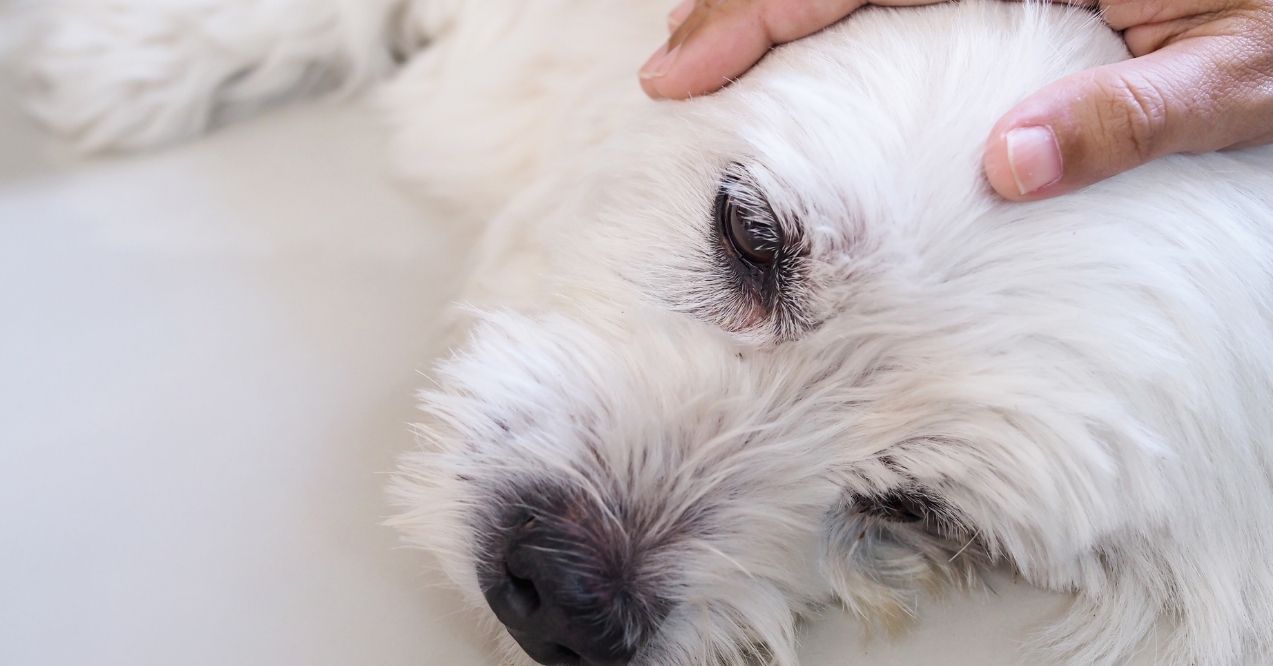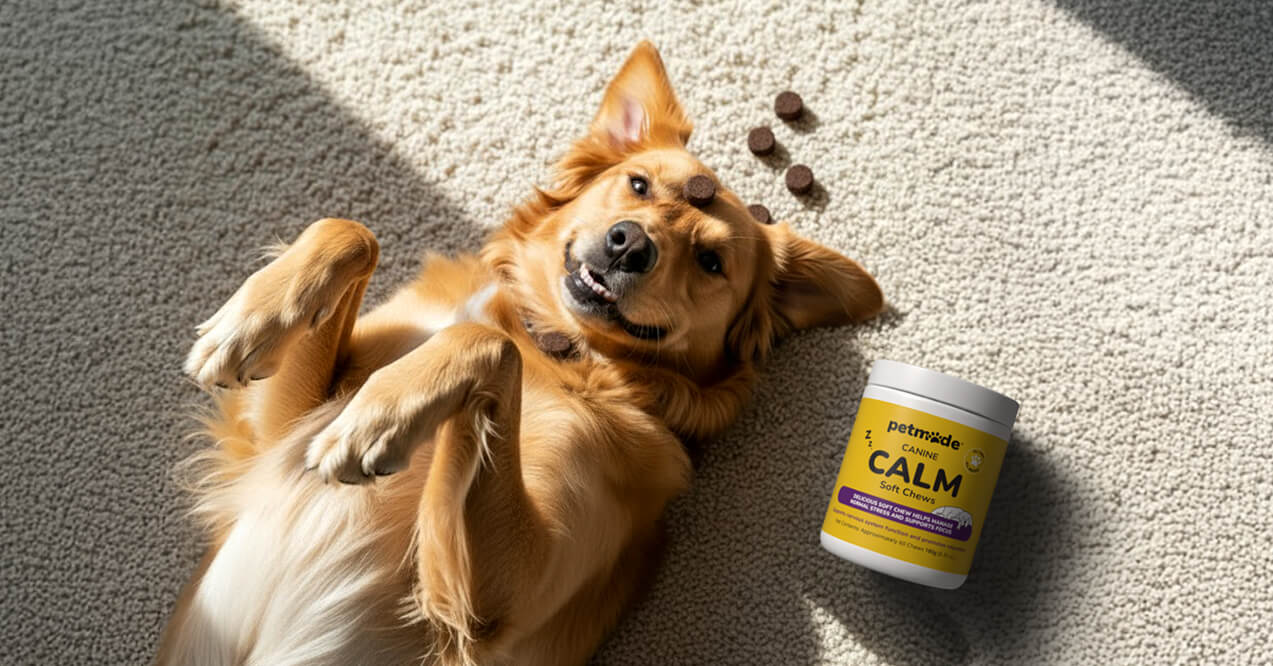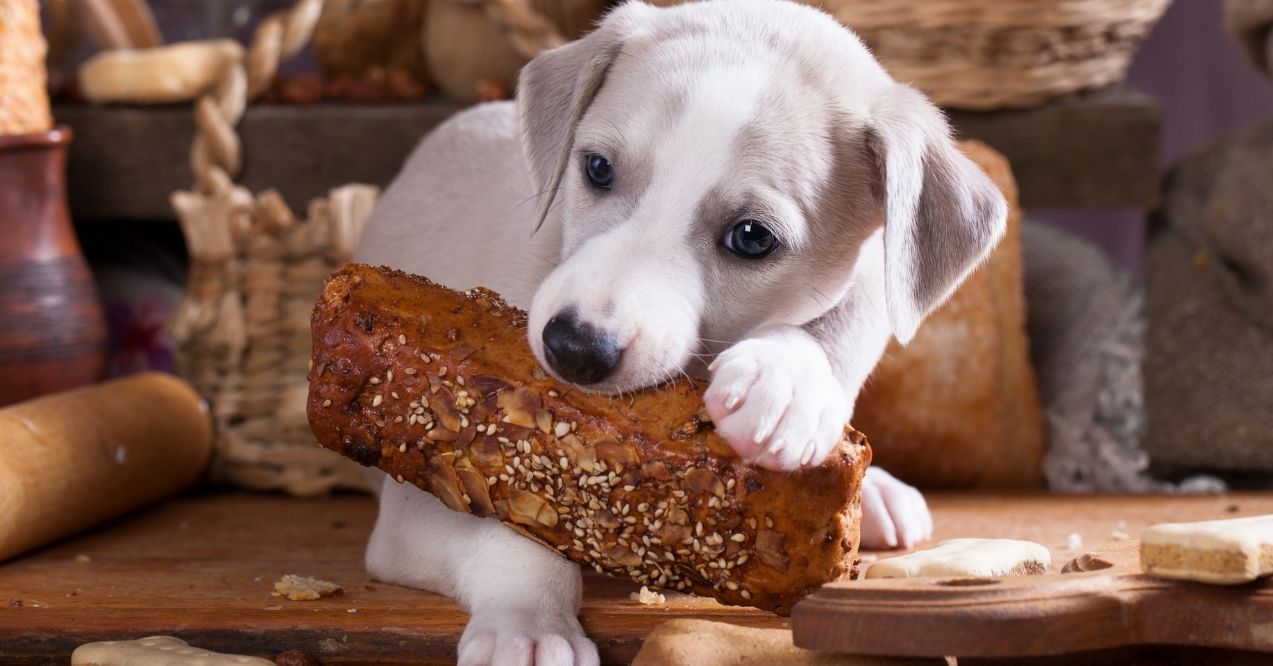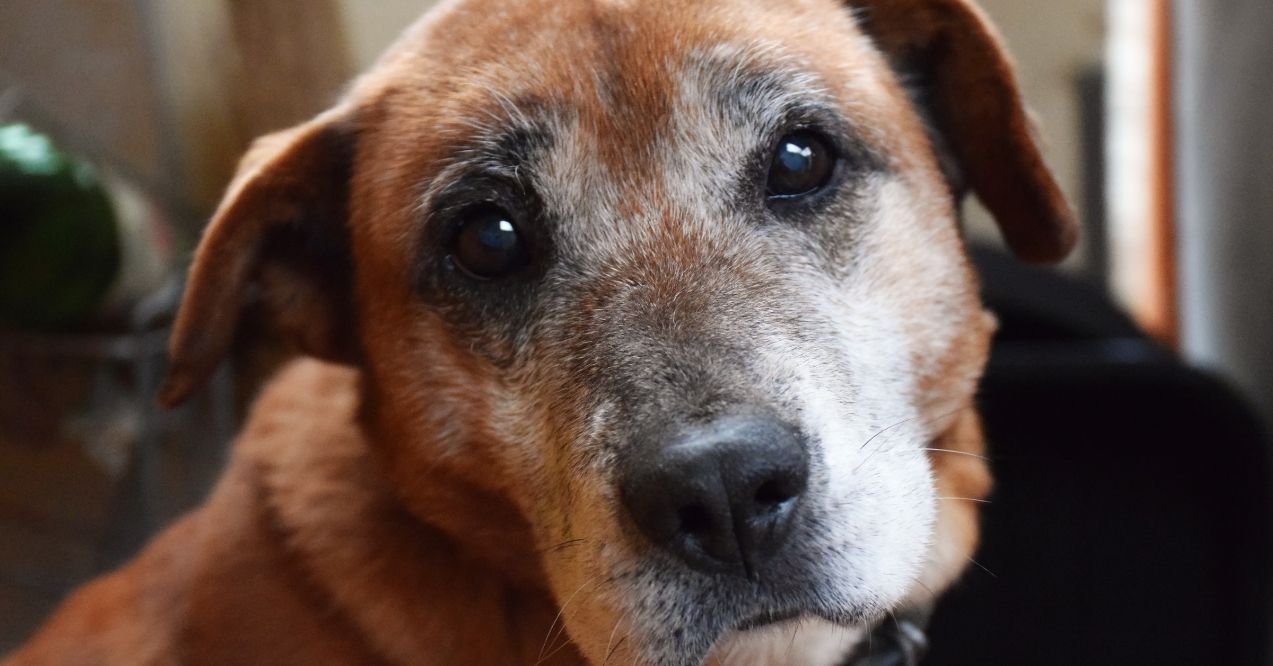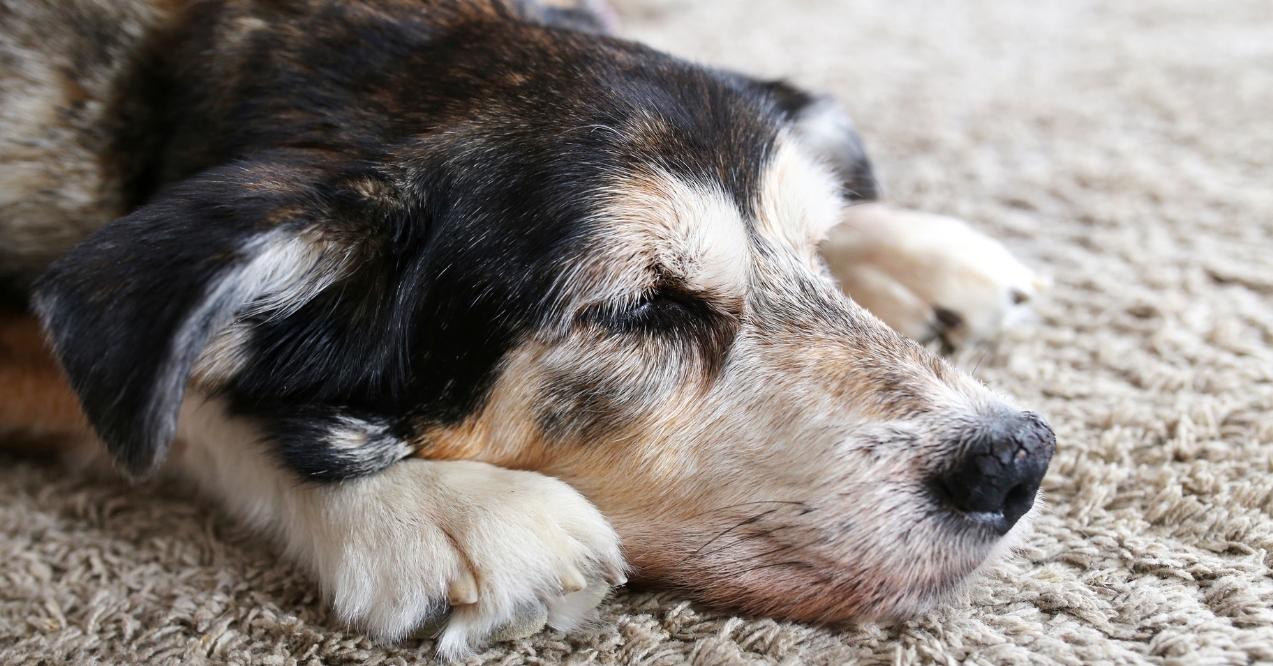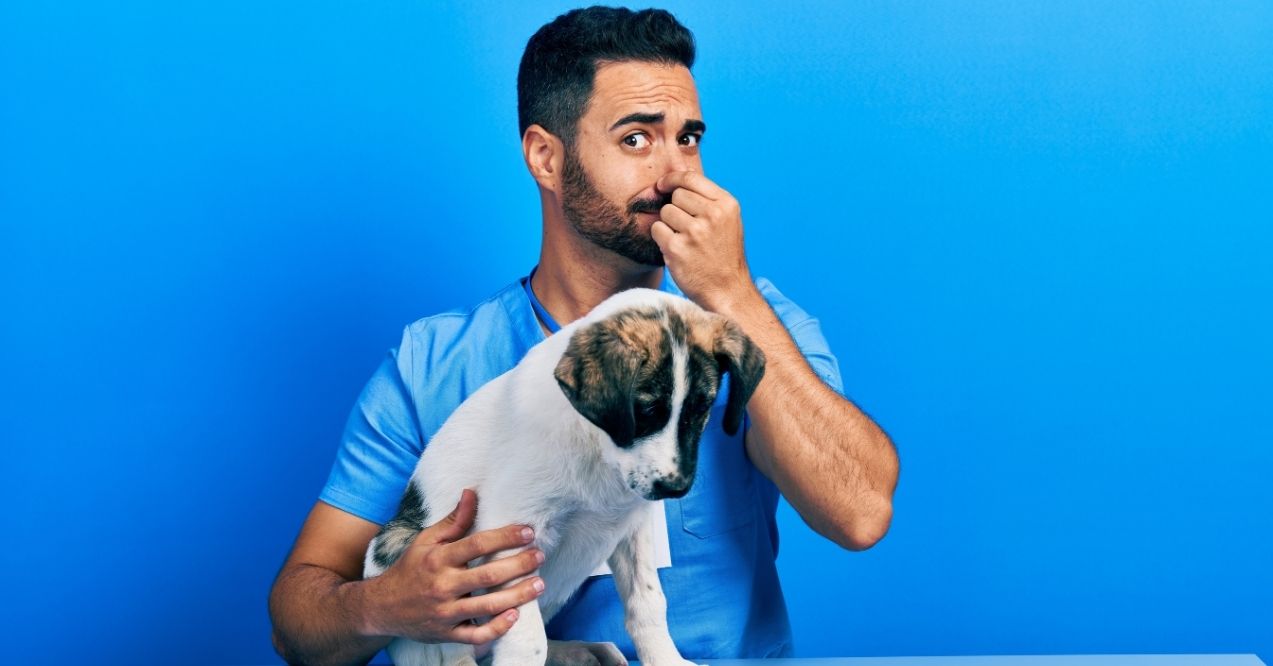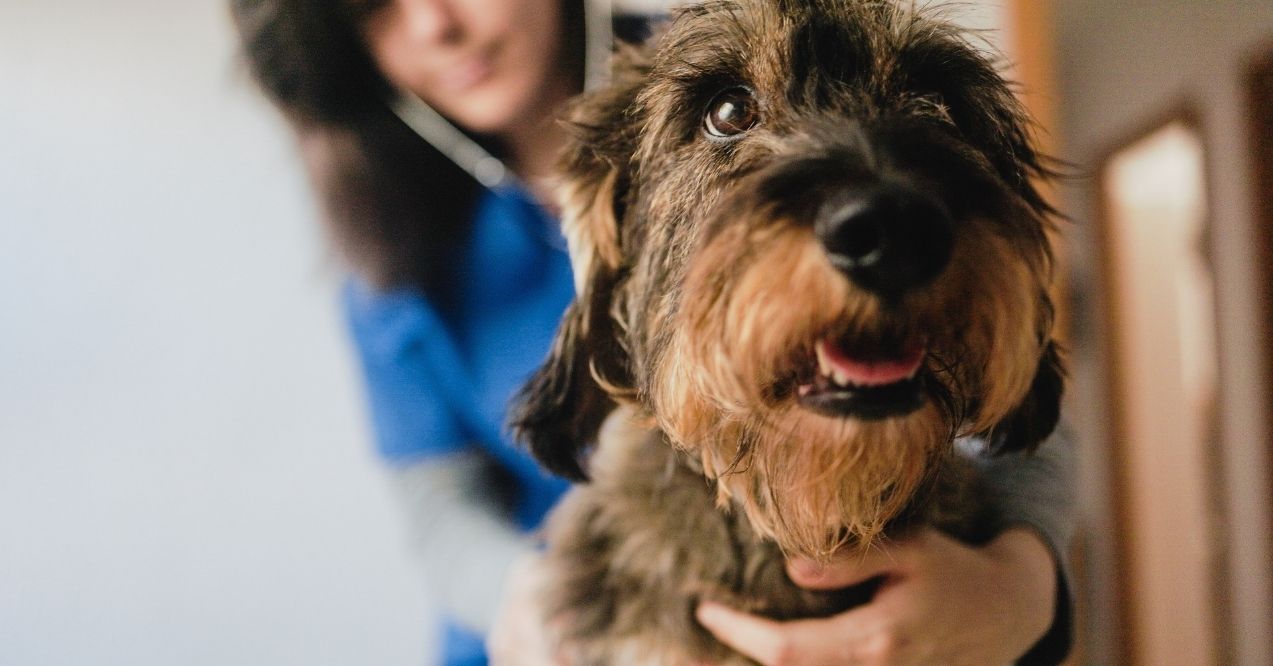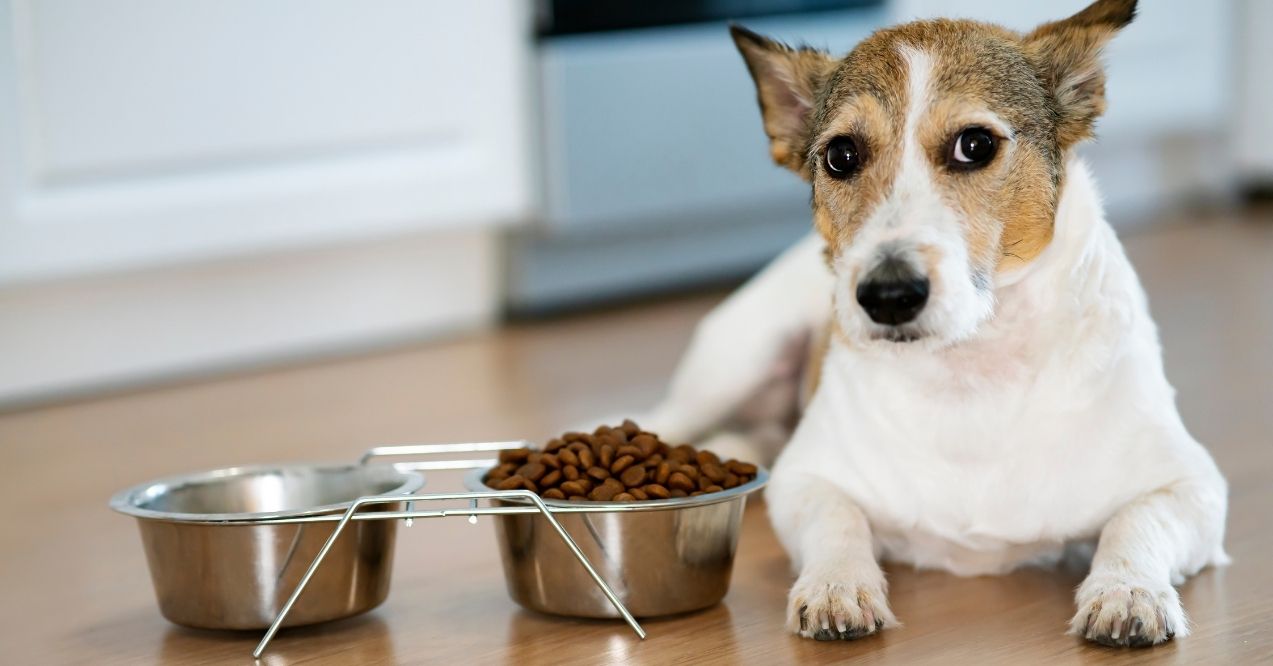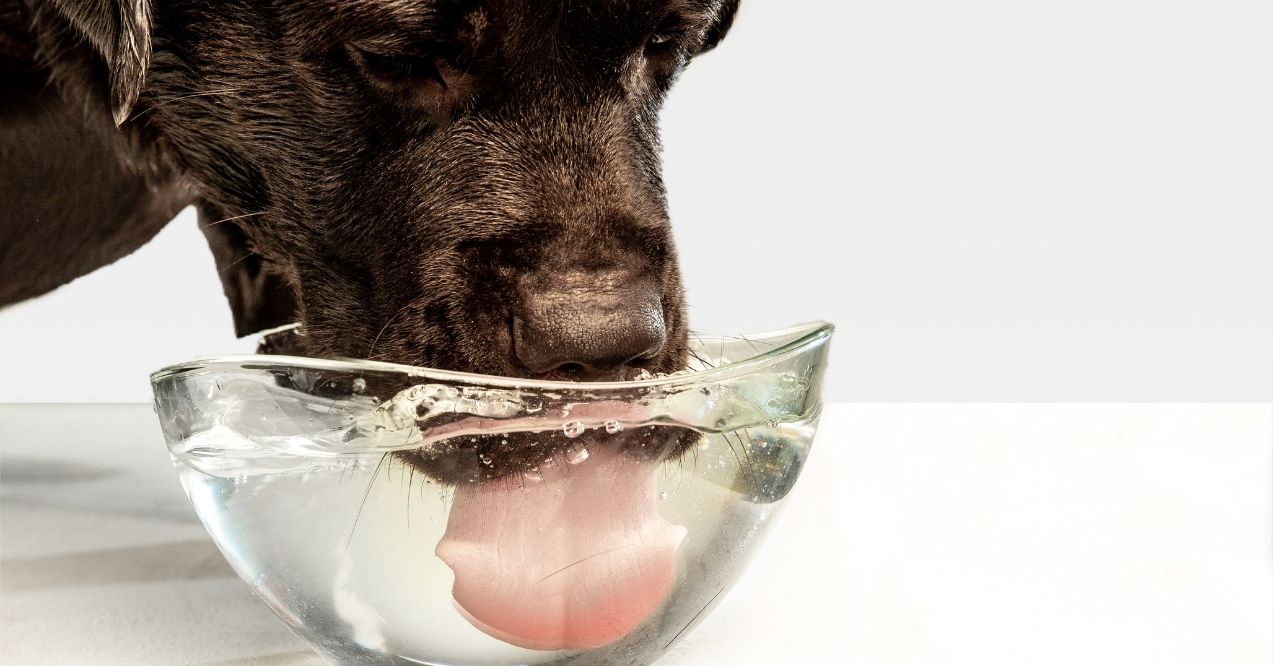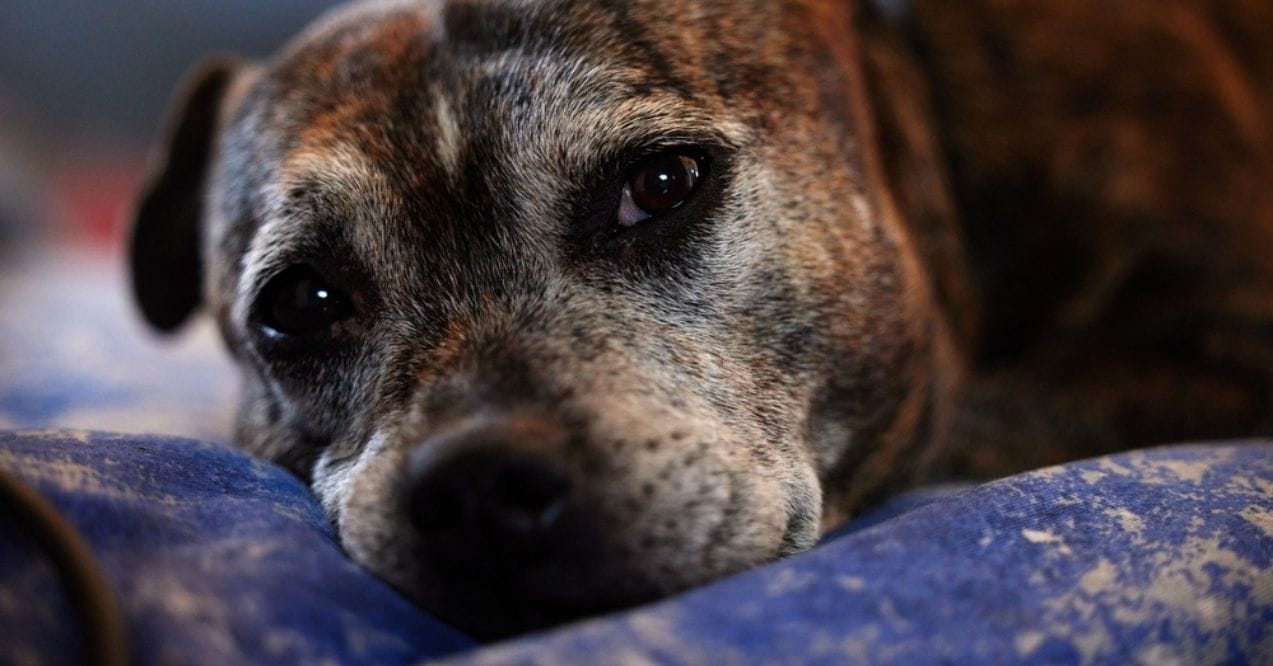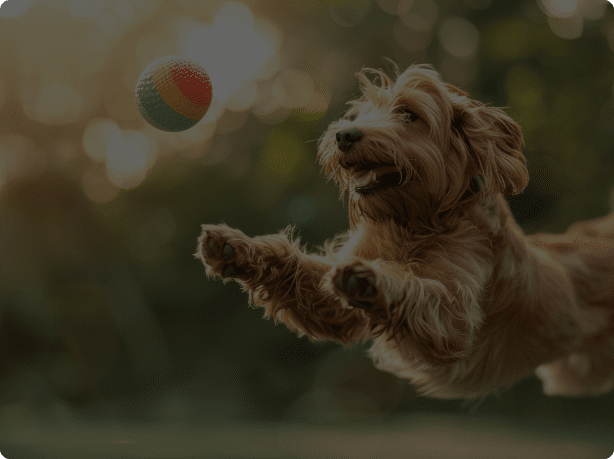Old Dog Breathing Heavy? Find Out Why
Noticing your old dog breathing heavy can stir up worry in any pet parent’s heart. As our furry companions enter their golden years, changes in breathing patterns often become more noticeable. While some changes are simply part of the aging process, others may signal that your senior pup needs extra support.
This guide will walk you through practical ways to monitor, manage, and support your senior dog’s respiratory comfort while helping you recognize when professional guidance might be beneficial.
Heavy Breathing in Older Dogs
When your senior dog starts breathing differently, it’s natural to wonder what’s normal and what’s not. Heavy breathing in older dogs goes beyond typical panting after a walk or on a warm day. You might notice deeper chest movements, louder breathing sounds, or more effort with each breath.
Age brings changes to your dog’s body systems, including how efficiently they process oxygen. Senior dogs may breathe harder during activities they once did with ease. Paying attention to when and how your dog’s breathing changes gives you valuable insights into their comfort level and overall wellness.
Normal Breathing Rates for Dogs
A healthy adult dog takes between 15 to 30 breaths per minute while resting. Senior dogs may breathe slightly faster, often reaching 35 breaths per minute during rest. To check your dog’s breathing rate, watch their chest rise and fall for 30 seconds, then multiply by two.
The best time to count is when they’re relaxed or sleeping. Breathing rates naturally increase during play, excitement, or warm weather. What matters most is establishing your individual dog’s baseline so you can spot changes.
When to Worry About Your Dog’s Breathing
Certain breathing patterns warrant closer attention and potentially a chat with your veterinary team. Watch for breathing that stays rapid even after rest, exceeding 40 breaths per minute consistently. Labored breathing where your dog uses stomach muscles or stands with elbows out needs immediate attention.
Blue-tinged gums, refusal to lie down, or breathing heavily during sleep are serious signs. Extended panting without obvious cause, wheezing sounds, or breathing that interrupts normal activities also deserve professional evaluation.
Common Causes of Heavy Breathing in Older Dogs
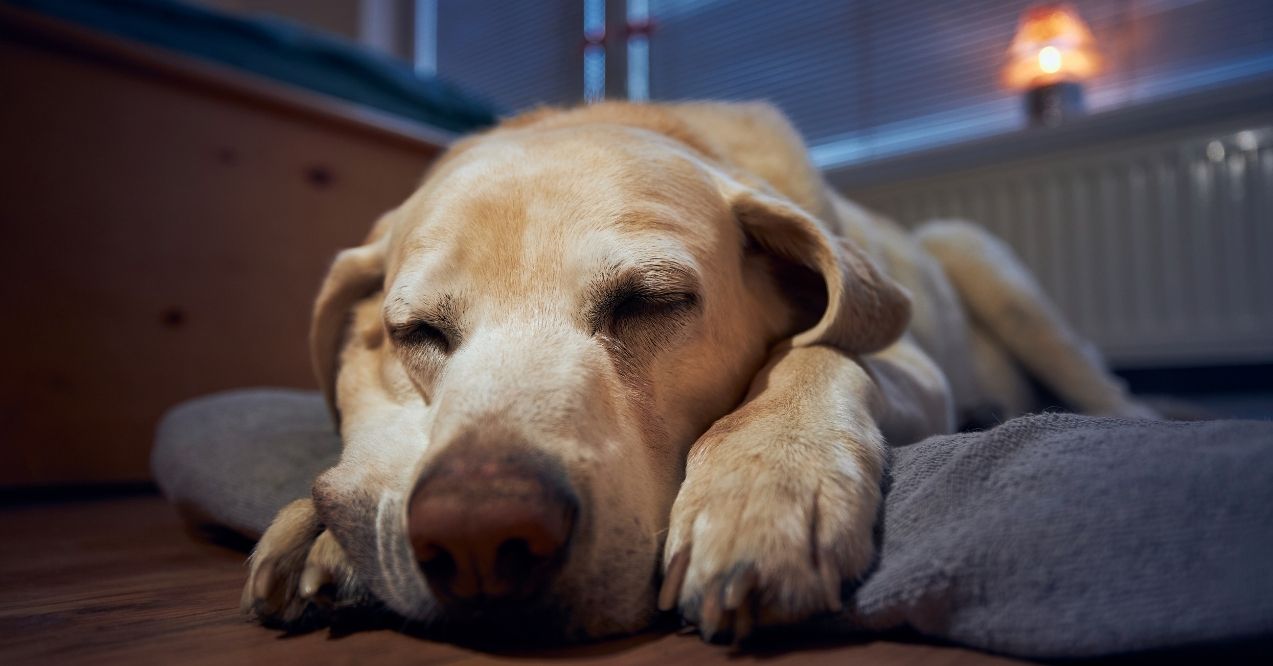
Knowing why your old dog is breathing heavy helps you provide targeted support. Senior dogs face various challenges that can affect their breathing, from natural aging processes to environmental factors. Most causes are manageable with simple adjustments to your dog’s routine and environment.
Let’s explore the most common reasons behind heavy breathing in our aging companions.
Changes in Heart and Lung Function
As dogs age, their cardiovascular and respiratory systems naturally become less efficient. The heart may work harder to pump blood, while lung capacity might decrease slightly. These changes mean your senior dog’s body needs more effort to deliver oxygen during activities.
You might notice your dog breathing harder after shorter walks or needing more recovery time. Supporting cardiovascular health through appropriate exercise, maintaining ideal weight, and providing quality nutrition helps these vital systems function optimally despite age-related changes.
Environmental Factors and Stress
Senior dogs often become more sensitive to their surroundings, and environmental stressors can trigger heavy breathing episodes. Temperature extremes affect older dogs more significantly – both hot summer days and cold winter air can make breathing more laborious. Household changes, loud noises, or disrupted routines may cause anxiety-related breathing changes.
Creating a consistent, comfortable environment supports easier breathing. Keep your home at a moderate temperature, provide quiet retreat spaces, and maintain predictable daily routines. If you’re looking for comprehensive guidance on caring for your senior dog, establishing these environmental supports forms a crucial foundation.
Discomfort or Strain
Physical discomfort can manifest as heavy breathing in older dogs. Age-related changes in joints and muscles may cause your dog to breathe harder as they navigate daily activities. Standing up, climbing stairs, or even shifting positions might require more effort, leading to increased breathing.
Dogs experiencing discomfort often pant as a coping mechanism. Providing orthopedic bedding, using ramps instead of stairs, and keeping your dog’s living areas easily accessible can significantly reduce physical strain and associated breathing difficulties.
Obesity and Weight Management
Extra pounds put additional stress on your senior dog’s body, making breathing more difficult. Excess weight forces the heart and lungs to work harder during even simple activities. Overweight dogs may experience heavy breathing after minimal exertion or while resting.
Maintaining a healthy weight through portion control and appropriate exercise supports easier breathing. Focus on nutrient-dense foods that satisfy without excess calories. Regular, gentle exercise tailored to your dog’s abilities helps manage weight while strengthening respiratory function.
How to Recognize and Respond to Strange Breathing in Dogs
Monitoring your dog’s breathing patterns helps you distinguish between normal variations and concerning changes. Developing observation skills empowers you to provide timely support when your older dog breathing hard becomes noticeable. Here’s how to assess breathing patterns effectively and respond appropriately.
Monitoring Breathing at Rest and During Activity
Track your dog’s breathing in different situations to establish their normal patterns:
- At rest – Count breaths when your dog is calm and relaxed
- During sleep – Note any changes in sleeping positions or restlessness
- After meals – Some dogs breathe heavier after eating
- Post-exercise – Time how long it takes breathing to return to normal
Keep a simple log noting breathing rates and any unusual patterns. This information proves valuable if you need professional guidance later.
What to Do if Your Dog is Breathing Heavy
When heavy breathing occurs, stay calm and assess the situation systematically. First, check the environment – is it too warm? Is your dog stressed?
Move them to a cool, quiet area with good airflow. Offer fresh water but don’t force drinking. If breathing doesn’t improve within 10-15 minutes of rest, or if you notice blue gums, extreme lethargy, or collapse, seek immediate professional care.
For less urgent situations where breathing is heavy but your dog remains alert and responsive, monitor closely and schedule a consultation. Learning about related issues that might accompany breathing changes, such as why your dog might be panting and shaking, helps you provide comprehensive care.
Home Care and Management for Older Dog Breathing Problems

Supporting your senior dog’s respiratory comfort at home involves creating an environment that promotes easy breathing while addressing factors within your control. These management strategies can make a significant difference in your dog’s daily comfort.
Creating a Calm Environment for Senior Dogs
A peaceful home environment significantly impacts breathing patterns in older dogs. Minimize sudden loud noises by using white noise machines or calming music during thunderstorms or fireworks. Establish consistent daily routines that reduce anxiety-induced breathing issues.
Designate quiet zones where your dog can retreat when feeling overwhelmed. Consider using pheromone diffusers designed to promote canine calmness. Gentle massage and quiet bonding time also help reduce stress-related breathing difficulties.
Ensuring Proper Air Quality and Temperature
Indoor air quality directly affects your dog’s breathing comfort. Use air purifiers to remove allergens and irritants, especially during high pollen seasons. Maintain humidity levels between 30-50% to prevent dry air from irritating airways.
During summer, keep rooms between 68-75°F, using fans for air circulation. In winter, avoid overheating rooms, which can make breathing laborious. Ensure good ventilation by opening windows during mild weather.
Avoid using strong cleaning products or air fresheners near your dog’s favorite resting spots.
Supporting Overall Vitality with Supplements
High-quality supplements may support your senior dog’s overall vitality, potentially making daily activities, including breathing, more comfortable. Look for supplements containing probiotics to support digestive health, antioxidants to promote cellular health, and adaptogens that may help manage stress responses. These ingredients work together to support energy levels, immune function, and general wellness in aging dogs.
A comprehensive supplement approach addresses multiple aspects of senior dog health simultaneously.
Proper Weight Management and Diet
Nutritional choices significantly impact breathing comfort in senior dogs. Focus on lean proteins to maintain muscle mass without excess calories. Include omega-3 fatty acids from fish oil to support overall health.
Smaller, more frequent meals prevent the discomfort of a full stomach pressing against the diaphragm. Fresh, whole foods provide better nutrition than heavily processed options. For specific guidance on optimal nutrition for older dogs, consider foods that support both weight management and respiratory health.
Always provide fresh water to keep airways moist and functioning well.
Exercise and Activity Adaptations for Older Dogs
| Age Group | Exercise Duration | Best Activities | Recovery Time |
| 7-9 years | 20-30 minutes | Gentle walks, swimming | 30-45 minutes |
| 10-12 years | 15-20 minutes | Short walks, gentle play | 45-60 minutes |
| 13+ years | 10-15 minutes | Brief strolls, mental games | 60+ minutes |
Adapt exercise routines to match your dog’s breathing capacity. Swimming provides excellent low-impact exercise that’s easier on the respiratory system. Break longer walks into shorter segments with rest periods.
Mental stimulation through puzzle toys offers engagement without physical strain. Monitor breathing during and after activities, adjusting intensity based on your dog’s response.
Conclusion
Recognizing why your old dog breathing heavy occurs empowers you to provide better care during their senior years. While some breathing changes are natural with aging, staying alert to patterns helps you identify when extra support is needed. Simple environmental adjustments, weight management, and appropriate exercise often improve breathing comfort significantly.
Aging affects heart and lung efficiency, making breathing require more effort. Weight, stress, temperature, and activity levels also influence breathing patterns in senior dogs.
Ensure comfortable room temperature, provide orthopedic bedding, and elevate their head slightly. If breathing remains labored or they seem distressed, consult your veterinary team promptly.
Yes, anxiety and stress commonly trigger heavy breathing. Senior dogs may become more sensitive to environmental changes, loud noises, or routine disruptions.
Seek help if breathing exceeds 40 breaths per minute at rest, gums appear blue, or your dog won’t lie down. Persistent heavy breathing without obvious cause also warrants professional evaluation.
Advertisement. This site offers health, wellness, fitness and nutritional information and is designed for educational purposes only. You should not rely on this information as a substitute for, nor does it replace, professional medical advice, diagnosis, or treatment. If you have any concerns or questions about your health, you should always consult with a physician or other health-care professional. Do not disregard, avoid or delay obtaining medical or health related advice from your health-care professional because of something you may have read on this site. The use of any information provided on this site is solely at your own risk.
